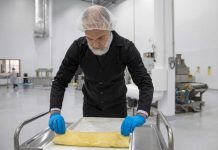
July 16 (UPI) — A group of potentially safer substitutes for the chemical compound bisphenol A, or BPA, has been identified by researchers at Baylor College of Medicine.
The study, published Thursday in Plos One, identified possible substitutes for BPA that do not have the adverse effects associated with the chemical, such as disruption of the endocrine system.
“People are exposed to the various plastics that contain BPA or BPA substitutes on a daily basis, so finding compounds that would allow us to make these plastics safer is an important contribution,” Dr. Adam Szafran, of the laboratory of Dr. Michael Mancini at Baylor, said in a press release.
Experts have expressed concerns about BPA and BPA substitutes because the chemical is an endocrine-disrupting chemical, or EDC, and affects the body by interfering with the endocrine system and can lead to cancer and other negative health effects on unborn and newborn babies.
“BPA, a poster child for endocrine-disrupting chemicals, is a synthetic compound present in a wide range of products, including polycarbonate plastics used in the manufacture of water and infant bottles, on resins coating metal food cans and in many other applications,” said Mancini, professor of molecular and cellular biology and director of the Integrated Microscopy Core at Baylor.
Researchers used multiple cell-based models, including an established multi-parametric, high-throughput microscopy-based platform to discriminate the estrogen-like and androgen-like properties of previously uncharacterized substituted bisphenol derivatives and hydroquinone.
“We previously established highly multiplexed, single cell-oriented model systems to identify mechanisms involved in complex hormonal biology,” Mancini said. “Unlike standard biochemical or toxicological assays, our approach quantifies levels of estrogen receptors, nuclear localization, DNA binding, large-scale chromatin modeling, protein interactions and transcription, and also include data on toxicity, cell proliferation and many other characteristics; all at the level of individual cells and in one assay that only takes a few hours.”
They identified two compounds that are inactive when compared to the negative effects attributed to BPA or BPA substitutes, but stressed that more research is needed.





